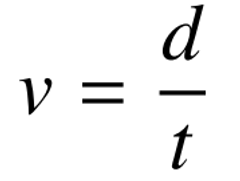

The Current Cosmological Crisis
First of all, don't be alarmed. The use of the word "crisis" is not synonymous with danger. In this case in fact, one might say that it is an incredibly interesting time to be a cosmologist.
This stems from an article written in November 2019 (Valentino et al) titled "Planck evidence for a closed Universe and a possible crisis for cosmology". Note that the term "possible" is used for what I would assume credibility if the findings of this article is violated. However, this seems unlikely as it is quoted in the abstract of this article that there is a 99% confidence level.
The age of the Universe is not a widely agreed upon and definite answer in the world of Cosmology. The reason being that there are different techniques to find an accurate answer.
The first of which being the "Standard Candle" technique derived in the late 1920s by Hubble. This is where you measure the brightness of an object where that object has the same brightness irrelevant to its position in the universe, and therefore finding its absolute brightness. For small distances we can use nearby stars or star clusters; for distances ranging 100 - 10 million lightyears we can use Cepheids (which are stars that brighten and dim periodically); and for the brightest cosmological objects which stretch to infinity, we use quasars and supernovae.
Measuring the apparent brightness, you can work out a statistic called redshift. Using this information you can find out things like its distance and velocity.
So, when you know how fast something is travelling away from you, and you know the distance it is from your current position. You can use an equation that everyone is familiar with:




However, for the purposes of this post, we are scientists! One method repeated doesn't guaruntee accuracy! So, we need to think of another one.
In 1964 an American radio astronomers Robert Wilson and Arno Penzias noticed a weird buzzing sound that came from all parts of the sky at all times. They worked tirelessly to remove this frustrating white noise-like sound - going so far as to remove pigeons that were nesting local to the antenna.
They hadn't realised that they had just discovered the echo from the beginning of time, the sound of the biggest explosion in the Universe billions of years after the event. This is the Cosmic Microwave Background Radiation (CMBR).
Since this is an event from the Big Bang, it would be a bright idea to date it to find out how old it was. Which is exactly what they did.
So, now we have 2 different methods for finding out the Universe's age. We can use them to find out a rough idea of how old it is. From the measurements they took, they found slightly different numbers for the Hubble Constant (CMBR = 67.4±0.5, stars = 69.8±1.9, Cepheids = 73.9±1.6). Taking these error bars into account we can assume that the age of the Universe is ~13.9 billion years old.
This was decades ago however, so what are todays instruments capable of finding?
One would hope that these errors would decrease and we can get a more accurate reading. However, we don't always get what we won't and instead of a nice, long glass of lemonde we serve ourselves the proverbial "big 'ol lemon" and we find that those error bars don't overlap anymore.
Well, this might mean that the Universe expands at different rates in different positions in the Universe. However, there is absolutely no reason for that to happen and in fact there is more evidence suggesting this is not the case.
Another reason, is because there is a geometry to space. Bare in mind, dear reader, that I don't mean space-time which is just a big ball of wibbly-wobbly, timey-wimey... stuff. I'm talking about whether space is flat, or curved either positively or negatively.
i.e. if I fly in the same direction forever in the universe, will come back to the position I began in
This can be:
1. The Universe is closed and negatively curved. Like the Earth for example where if I set off South from the North Pole and walk forever, eventually I will get back to the North Pole.
2. The Universe is open and positively curved, like a saddle... or a pringle... and if I set off in parallel with a friend in any given direction, then eventually we will begin to diverge.
3. The Universe is flat and like in case 2. me and my friend will be side by side forever - which is touching really.
What does this mean?

What these very clever people found, was that actually reanalysing the data from the CMBR and Standard Candle method, except this time assuming that the Universe is closed (like in case 1.) Then the error bars overlap again.
This heavily suggests then, that the Universe is indeed negatively curved. So if you did want to get in a big spaceship and get as far away from anyone on Earth as possible because you really, really, REALLY, hate people. Eventually you will find yourself back where you started and there is no escaping people. This, I am sure, is devestating news for introverts everywhere.
This also means that the Universe is slightly older than we first thought - it is actually around 18 billion years old!
Now to the average person this likely means litte-to-nothing. And to be completely honest, there is truth to that it doesn't affect me nor you. But it is, nonetheless, very important and allows us to answer important questions. Questions like
"How will the Universe end?"
"Can we travel faster than light?"
and
"Will the Universe continue to be habitable so that if I fall into a vat of acid and become an immortal superhero I will have a Universe to live in?"
Important questions I think we can agree, we all want to know the answer to.
Credit to Dr. Becky at the University of Oxford! She posted a fantastic video on this back in November which was the inspiration for this post and I insist you check it out!
Dr Becky: https://www.youtube.com/watch?v=cnn_5YMpo3Q
Original article: https://www.nature.com/articles/s41550-019-0906-9?fbclid=IwAR1yqWFU1W_S_v5kgGj45mQQCICCXmHpb5yloCvnnfqIoFZqtZNQOcQWx5U
Definitions:
Absolute Brightness: The absolute magnitude of a star, M is the magnitude the star would have if it was placed at a distance of 10 parsecs from Earth. Source: https://astronomy.swin.edu.au/cosmos/A/Absolute+Magnitude
Apparent Brightness: Apparent magnitude (m) is a measure of the brightness of a star or other astronomical object observed from the Earth. Source: https://en.wikipedia.org/wiki/Apparent_magnitude#:~:text=Apparent%20magnitude%20(m)%20is%20a,of%20sight%20to%20the%20observer.
Redshift: Redshift, displacement of the spectrum of an astronomical object toward longer (red) wavelengths. It is generally attributed to the Doppler effect, a change in wavelength that results when a given source of waves (e.g., light or radio waves) and an observer are in rapid motion with respect to each other. Source: https://www.britannica.com/science/redshift
Cosmic Microwave Background Radiation: The cosmic microwave background (CMB, CMBR), in Big Bang cosmology, is electromagnetic radiation as a remnant from an early stage of the universe, also known as "relic radiation". Source: https://en.wikipedia.org/wiki/Cosmic_microwave_background
Hubble Constant: The Hubble constant is a unit that describes how fast the universe is expanding at different distances from a particular point in space. It is one of the keystones in our understanding of the universe's evolution — and researchers are mired in a debate over its true value. Source & see more: https://www.livescience.com/hubble-constant.html#:~:text=The%20Hubble%20constant%20is%20a,debate%20over%20its%20true%20value.
